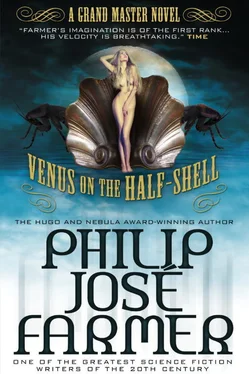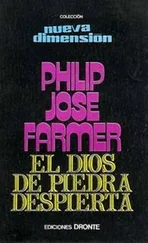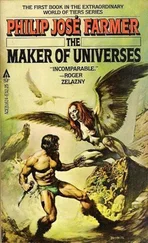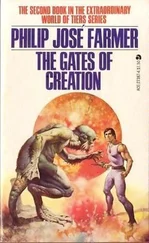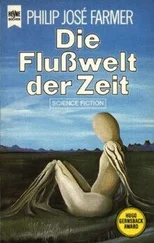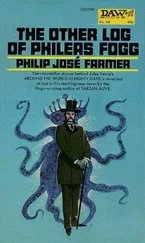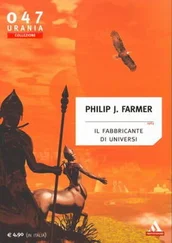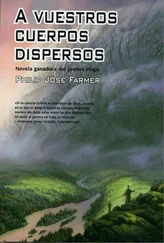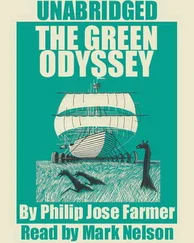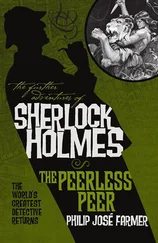The failures—those fictional-author stories imagined but never written—are almost as compelling as the successes. Ed Ferman suggested that Farmer have Ron Goulart write a story as by his character José Silvera, and while Farmer did query him, there is no immediate evidence that Goulart pursued the matter. Farmer himself sought and was granted permission to write a story under the name Gustave von Aschenbach, the novelist from Thomas Mann’s A Death in Venice ; however, apparently overwhelmed by the large number of fictional-author stories he planned to write on his own, Farmer turned the idea over to writer and literary critic Leslie Fiedler. This story, too, seems to have fallen by the wayside; if it was ever written, it never saw print.
One of the first authors approached to join in the conspiracy was Philip K. Dick. Farmer trusted Dick with the secret of who had written Venus on the Half-Shell, and in the process discussed Dick writing a fictional-author tale for Ferman’s magazine. Dick decided this would be a short story entitled “A Man For No Countries” by Hawthorne Abdensen, the writer-character from his classic novel of alternate history, The Man in the High Castle . No fictional alter ego could have suited Dick better for the undertaking, as Abdensen himself was the fictional author of The Grasshopper Lies Heavy, a novel that implied the existence of multiple realities. The Chinese-box scenario must have pleased Dick, who worked often with such themes; but it must also have pleased Farmer, who years later went on to write the similarly head-twisting Red Orc’s Rage, a novel wherein Farmer’s own World of Tiers series serves as the basis for a method of psychiatric therapy to treat troubled adolescents, and in which Farmer himself lurks just off screen as a character. Although “A Man For No Countries” never seems to have been written, Farmer’s role in proposing that Dick pen a fictional-author story is important, for that unwritten story appears to have been the idea-kernel that led Dick to write the posthumously published novel Radio Free Albemuth, which itself was an aborted draft of his critically acclaimed novel VALIS . One must also ponder the timing of Farmer’s proposal, in the spring of 1974, a period when Dick claims to have had a number of mystical experiences, including one in which his mind was supposedly invaded by a foreign consciousness.
While Farmer was by far the most industrious and successful of the group in executing the fictional-author ruse, many of his own plans had to be abandoned because of time constraints placed upon him by other writing obligations. Farmer’s correspondence, notes, and interviews from the fictional-author period reveal a long and fascinating list of stories never written and those started but not completed:
“The Gargoyle” as by Edgar Henquist Gordon. (Fictional title and author from Robert Bloch’s short story “The Dark Demon”; permission for use granted by Robert Bloch.)
“The Feaster from the Stars” as by Robert Blake. (This unfinished Cthulhu Mythos pastiche derives from a title and fictional author in H. P. Lovecraft’s “The Haunter of the Dark.” Lovecraft’s story is a sequel to Robert Bloch’s “The Shambler from the Stars,” wherein Bloch kills off a character based on H. P. Lovecraft. Robert Blake, of course, is an analog for Robert Bloch, and is in turn killed off in Lovecraft’s tale. A good friend of Farmer’s, Bloch enthusiastically gave his blessing to this unfinished story about Haji Abdu al-Yazdi, a pseudonym belonging to one of Farmer’s real-life heroes, who was also the main protagonist of the Riverworld series: Sir Richard Francis Burton. Robert Blake is also mentioned in Farmer’s Cthulhu Mythos tale “The Freshmen,” which was recently reprinted in the anthology Tales of the Wold Newton Universe, Titan Books, 2013.)
“UFO Versus CBS” as by Susan DeWitt. (From Richard Brautigan’s The Abortion: An Historical Romance 1966.)
Untitled “Smoke Bellew” stories. (Continuation of the series by Jack London. Although the stories were in the public domain, permission was refused by London’s literary executor and the stories went unwritten.)
Untitled story as by Martin Eden. (From Jack London’s Martin Eden ; no record yet found of a permission query.)
Untitled story as by Edward P. Malone. (The intrepid reporter from Sir Arthur Conan Doyle’s The Lost World. As mentioned above, this fictional author was turned over to Howard Waldrop.)
Untitled story as by Gerald Musgrave. (From James Branch Cabell’s Something About Eve. Interestingly, Cabell used anagrams prominently in his work, as Farmer does in Venus on the Half-Shell .)
Untitled story as by Kenneth Robeson. (Proposed second story of The Grant-Robeson Papers ; the first was Farmer’s “The Savage Shadow” as by Maxwell Grant.)
The Son of Jimmy Valentine as by Kilgore Trout. (Permission denied by Kurt Vonnegut after the fallout from Venus on the Half-Shell.)
“The Adventure of the Wand of Death” as by Felix Clovelly. (“Felix Clovelly” is a pen name of Wodehouse’s thriller novelist Ashe Marston from Something New. Permission granted by Wodehouse.)
But however many ideas Farmer abandoned, his list of completed fictional-author tales is equally impressive. These tales are sly, tongue-in-cheek, sometimes shocking, and more often than not uproariously funny. The following list is a chronological bibliography of Farmer’s published fictional-author stories:
The Adventure of the Peerless Peer as by John H. Watson, M.D. (Aspen Press, 1974; reprinted as The Further Adventures of Sherlock Holmes: The Peerless Peer, Titan Books, 2011. Dr. Watson, of course, is from the works of Sir Arthur Conan Doyle.)
Venus on the Half-Shell as by Kilgore Trout. (The Magazine of Fantasy and Science Fiction, ed. Edward L. Ferman, December 1974-January 1975; reprinted in book form, Dell, 1975, and Titan Books, 2013. Kilgore Trout is the wildly imaginative, though sad-sack, science fiction author from the works of Kurt Vonnegut.)
“A Scarletin Study” as by Jonathan Swift Somers III. ( The Magazine of Fantasy and Science Fiction, ed. Edward L. Ferman, March 1975; reprinted in Tales of the Wold Newton Universe, Titan Books, 2013. Jonathan Swift Somers III appears as a fictional author in Venus on the Half-Shell, and is also the subject of Farmer’s biographical essay “Jonathan Swift Somers III: Cosmic Traveller in a Wheelchair.”)
“The Problem of the Sore Bridge—Among Others” as by Harry Manders. (The Magazine of Fantasy and Science Fiction, ed. Edward L. Ferman, September 1975; reprinted in Tales of the Wold Newton Universe, Titan Books, 2013. Harry “Bunny” Manders is a fictional author from the Raffles stories of E. W. Hornung.)
“The Volcano” as by Paul Chapin. (The Magazine of Fantasy and Science Fiction, ed. Edward L. Ferman, February 1976. Paul Chapin appears in Rex Stout’s Nero Wolfe novel The League of Frightened Men.)
“Osiris on Crutches” as by Philip José Farmer and Leo Queequeg Tincrowdor. (New Dimensions 6, ed. Robert Silverberg, Harper & Row, 1976. Farmer wrote of Leo Queequeg Tincrowdor in his novel Stations of the Nightmare and short story “Fundamental Issue.”)
“The Doge Whose Barque Was Worse Than His Bight” as by Jonathan Swift Somers III. (The Magazine of Fantasy and Science Fiction, ed. Edward L. Ferman, November 1976; reprinted in Tales of the Wold Newton Universe, Titan Books, 2013. See the entry above for “A Scarletin Study.”)
“The Impotency of Bad Karma” as by Cordwainer Bird. (Popular Culture , First Preview Edition, ed. Brad Lang, June 1977; revised version published in Chrysalis, Volume Two, ed. Roy Torgeson, Zebra Books, 1978 as “The Last Rise of Nick Adams,” now under Farmer’s own name. Cordwainer Bird appears as a character in Harlan Ellison’s short story “The New York Review of Bird” and in Farmer’s “The Doge Whose Barque Was Worse Than His Bight.”)
Читать дальше
